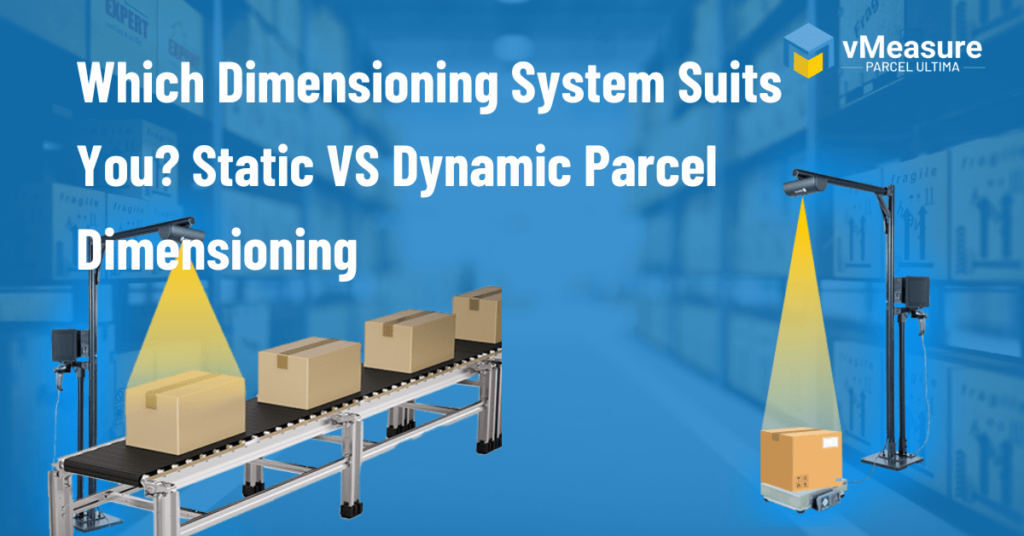Table of Contents
Introduction
In the digital age, the supply chain has transformed into a fast-paced, highly demanding industry. The e-commerce boom, spearheaded by giants like Amazon and Alibaba, has reshaped consumer expectations. It’s no longer about waiting a week for a package; it’s about anticipating its arrival tomorrow or even today. Consequently, warehouses, which once functioned primarily as storage facilities, have evolved into dynamic hubs of activity.
This shift is not merely about fulfilling orders. It’s about doing so at a pace that matches the rapidity of online transactions. When a customer clicks ‘buy’ on a product, the journey of that product from the warehouse shelf to the consumer’s doorstep is expected to be seamless and swift. Such expectations exert tremendous pressure on warehouses to up their game.
Enter technology-driven solutions: in the quest to maintain a competitive edge, businesses are increasingly looking towards innovation. Among the myriad of tech solutions available, Automated Parcel Solutions have emerged as a frontrunner. But how does one gauge the value of this technology?
The answer lies in understanding its Return on Investment (ROI), a critical metric that provides insights into the potential profitability of this investment.
What is an Automated Parcel Solution?
To comprehend the nuances of Automated Parcel Solutions / DWS systems, imagine a world where parcels self-navigate through a maze, ensuring they reach their destination flawlessly. These solutions are essentially advanced systems that bring automation, precision, and agility to the once manual process of handling parcels.
Barcode Scanning and Reading Systems
- Barcodes have been integral to inventory management, but their role has been amplified with automation.
- Modern scanning systems don’t just recognize barcodes; they instantaneously pull up a wealth of information related to the parcel, from its contents to its journey trajectory.
- This ensures real-time tracking, enhancing transparency in the supply chain.
Automated Conveyor Belts
- The era of manual cart-pulling is fading.
- Automated conveyor belts, with their intricate networks, ensure parcels move from one point to another without human intervention.
- They can be programmed to stop, start, or change direction based on the parcel’s destination, ensuring efficient movement within the warehouse.
Sorting Mechanisms
- Sorting parcels isn’t just about segregating them based on destination. It involves understanding the weight, size, fragility, and even priority of each parcel.
- Automated sorters use a combination of sensors, cameras, and software algorithms to ensure that each parcel is categorized and directed appropriately.
Digital Systems for Documentation and Data Entry
- The administrative side of parcel handling has also witnessed a revolution.
- Gone are the days of manual log entries. Today’s systems auto-populate fields, ensuring that data related to every parcel is instantly documented, reducing errors and enhancing data integrity.
Looking back, the old days when people sorted things by hand seem old-fashioned. Workers were always in a hurry, trying to put parcels in the right piles, but sometimes they made mistakes and put things in the wrong place. This way of doing things wasn’t very efficient.
Now, thanks to new technology, warehouses have changed a lot. They’re super precise and make sure packages are dealt with quickly and accurately.
Benefits of Automated Parcel Solutions
- Efficiency and Speed: DWS systems work 24/7 without breaks. They can process parcels consistently and quickly, significantly reducing the time from order receipt to dispatch.
- Accuracy: Machines, once programmed and calibrated, make minimal errors. This accuracy ensures every parcel is handled correctly, leading to fewer misplaced or lost items.
- Scalability: DWS systems can be scaled up or down based on demand. New modules or units can be added during peak seasons, ensuring that the surge in orders doesn’t compromise efficiency.
- Cost Savings: Over time, automation can lead to substantial savings. While the upfront cost is significant, the cumulative savings from reduced labor, fewer errors, and faster processing can quickly offset the initial investment.
- Enhanced Customer Experience: Automation often leads to quicker order processing and dispatch. This efficiency results in faster deliveries, directly contributing to enhanced customer satisfaction.
Calculating ROI of Automated Parcel Solutions
When considering the transition to DWS systems, businesses often ask: Is the investment worth it? The answer lies in the Return on Investment (ROI) – a metric that evaluates the profitability of an investment relative to its cost. While the concept of ROI is simple, understanding its components and the factors influencing it is crucial.
1. Breaking Down ROI
a.Initial Investment:
- This represents the starting costs and includes all expenditures required to set up the solution.
- It encapsulates expenses related to machinery procurement, software licenses, and installation processes.
- For businesses, this is a crucial number as it marks the starting point of their investment journey.
b.Operational Costs:
- No system operates without ongoing expenses.
- These could range from routine maintenance checks, software updates, energy consumption, and any other recurring costs necessary to keep the automated solution running smoothly.
c.Savings and Earnings:
The real strength of automated solutions shines through the savings and added earnings they bring. This includes:
- Labor Cost Savings:
As automation takes over, the need for manual intervention reduces, leading to potential reductions in payroll expenses. - Reduced Errors and Returns Savings: Enhanced accuracy ensures fewer mistakes, which directly translates to reduced costs associated with returns, replacements, and potential compensations.
- Increased Earnings due to Faster Processing: The efficiency of DWS systems allows for a higher volume of order processing, leading to increased sales and earnings.
Real-World Case Studies
Case Study Summary:
vMeasure’s Impact on an Online Books Retailer’s Shipping Charges through DesktopShipper’s Integration.
Background:
An online book retailer aimed to enhance its shipping charge accuracy by acquiring precise dimensions of a wide array of small-sized SKUs. The company collaborated with vMeasure and integrated its solution with the DesktopShipper application to achieve this goal.
Challenges Faced:
Business Challenges:
- Low Order Throughput: Manual dimensioning was slow and affected order growth.
- Inaccurate Shipping Estimates: Wrong DIMS caused cost miscalculations and penalties.
- Elevated Shipping Costs: Frequent misdimensioning kept costs high.
Logistics Challenges:
- Carrier Selection Issues: Wrong DIM affected carrier choices.
- Negotiation Barriers: Lack of precise dimensions hindered carrier negotiations.
- Faulty Shipping Labels: Despite DesktopShipper, manual dimensioning caused label errors.
IT Challenges:
- Manual Record-Keeping: Handwritten/partially digitized data was hard to manage.
- Underutilization of DesktopShipper: Inaccurate dimensions limited DesktopShipper’s benefits.
- Scalability Issues: Expanding warehouse ops needed excessive IT resources.
Key Benefits of Implementing vMeasure DWS systems
Business Benefits:
- Increased Profitability: Cost cuts in packaging, labor, and shipping boosted profits.
- Predictable Shipping Costs: Precise costs allowed efficient capital allocation.
- Accurate Shipping Expenses: Exact DIMs and weight data ensured correct shipping costs.
- Adaptability: Management handled more volumes and adapted to business changes.
Operational Benefits:
- Enhanced Dimensioning Speed: vMeasure sped up outbound dimensioning.
- Improved Carrier Terms: Precise dimensions led to better carrier deals.
- Streamlined Workflow: vMeasure with DesktopShipper optimized processes.
- Increased Order Throughput: vMeasure simplified dimensioning, boosting throughput.
Administrative Benefits:
- Efficient Documentation: Admin used vMeasure in DesktopShipper for error-free docs.
- Accurate Shipping Labels: Integration enhanced label accuracy.
- Reduced Chargeback Risk: vMeasure + DesktopShipper cut chargeback disputes.
- Parcel Image Capture: Offered proof against carrier chargebacks/penalties.
In summary, the integration of vMeasure DWS systems with DesktopShipper transformed the online book retailer’s shipping process. The retailer benefited from cost savings, streamlined operations, and enhanced administrative efficiency.
Discover how vMeasure DWS systems revolutionized an online book retailer’s shipping process and led to significant cost savings. Dive deeper into this transformative journey. Click here to read the full case study!
Factors to Consider When Implementing an Automated Parcel Solution
1. Choosing the Right Solution:
Every warehouse is unique, and so are its requirements. Before investing in an automated parcel solution, it’s essential to undertake a detailed analysis to determine which system aligns best with the warehouse’s specific needs.
- Type of Goods: The nature of goods stored can significantly influence the choice. For instance, warehouses storing perishable goods like fruits or dairy products might need a solution that emphasizes swift processing to ensure the goods are dispatched and delivered before they spoil. On the other hand, warehouses storing fragile items like glassware or electronics might need systems that prioritize delicate handling over speed to prevent damage.
- Volume and Throughput: The volume of goods processed, and the desired throughput rate can also impact the choice. Larger warehouses with high volumes might prefer robust systems capable of handling significant capacities, while smaller ones might opt for more compact solutions.
2. Seamless Integration:
The integration of the new automated solution with existing systems is paramount.
- Data Flow: A new system should be able to communicate effectively with existing ERP (Enterprise Resource Planning) or WMS (Warehouse Management System) platforms. This ensures that data like inventory levels, shipment tracking, and order processing remains consistent and updated across all systems.
- Compatibility: The new solution should be compatible with the current software versions and configurations to prevent any technical glitches or downtimes.
3. Comprehensive Training:
Introducing a new system can often be a paradigm shift for employees.
- Ease of Transition: Well-structured training sessions can help employees adapt to the new automated parcel solution. This not only enhances efficiency but also boosts morale as employees feel more confident in using the new system.
- Continuous Learning: As systems update and evolve, continuous training sessions should be provided to keep employees updated on the latest features and best practices.
4. Assessing Infrastructure Needs:
The physical attributes of the warehouse can dictate the type and scale of the DWS systems.
- Space Constraints: Some DWS systems might be bulky and require ample space. Before investing, it’s essential to assess whether the warehouse can accommodate the new system without hampering existing operations.
- Structural Modifications: Some DWS systems might necessitate structural changes to the warehouse, such as installing new conveyor belts, redesigning storage racks, or setting up dedicated areas for specific functions.
- Setup Requirements: Different DWS systems might come with varied setup demands. While some might be plug-and-play, others might require extensive installations, electrical modifications, or specific environmental conditions.
In conclusion, while an automated parcel solution can significantly enhance efficiency and reduce costs, it’s crucial to consider the above factors to ensure a successful implementation and optimal returns on investment.
Future Trends in Automated Parcel Solutions
In the ever-evolving landscape of technology and logistics, automated parcel solutions are poised to undergo transformative changes.
Here’s a deeper look at the emerging trends that could reshape the industry:
Artificial Intelligence (AI) in Sorting:
- The integration of AI can revolutionize the parcel sorting process.
- Instead of just following pre-set rules, AI-driven systems could learn from past data, make real-time decisions, and adapt to new situations, ensuring a more efficient and accurate sorting process.
Predictive Analytics:
- The power of data can’t be understated.
- With predictive analytics, warehouses could forecast order volumes based on historical data, seasonal trends, and market predictions.
- This foresight would allow warehouses to manage inventory better, allocate resources efficiently, and be better prepared for peak order times, minimizing bottlenecks, and maximizing efficiency.
Sustainability in Automation:
- As the world becomes more conscious of environmental impacts, sustainability will play a crucial role in shaping automated solutions.
- We can expect:
- Eco-friendly Packaging Mechanisms: Automated solutions could be designed to use biodegradable or recycled materials, reducing waste and environmental impact.
- Energy-Efficient Machines: The next generation of automated parcel solutions will likely prioritize energy efficiency, utilizing technologies like solar power, battery optimization, or energy-saving modes, aligning with global efforts to reduce carbon footprints.
Conclusion
The online shopping and shipping industries are on the verge of a big digital change. As companies get bigger and people want more stuff delivered, the old way of doing things with people handling packages by hand is getting old-fashioned. So, keeping up with new technology and ideas is not just a nice thing to do – it’s a must.
Automated Parcel Solutions are machines and systems that can handle packages automatically. They cost a lot to set up at first, but they bring a bunch of good things. They make things work faster and more accurately, and they cost less to run. So, they give a good return on the money you put in.
As technology gets better, warehouses that use these automated systems will not only make their work smoother but also be the best in the business. In today’s world, being quick, efficient, and eco-friendly is super important. So, these Automated Parcel Solutions are not just for now – they’re for the future.
Frequently Asked Questions
What is the ROI of DWS systems?
ROI, or Return on Investment, evaluates the profitability of the technology relative to its cost. It considers the initial investment, operational costs, and the savings and earnings generated by the DWS system.
Are there any future trends anticipated in Automated Parcel Solutions?
Future trends include the integration of Artificial Intelligence for smarter sorting, predictive analytics for better order volume forecasting, and a strong emphasis on sustainability with eco-friendly packaging mechanisms and energy-efficient machines.
How can warehouses prepare for the space and structural requirements of DWS systems?
Before implementing a solution, warehouses should assess space constraints, potential structural modifications, and specific setup requirements to ensure smooth integration.
Ready to Optimize Your Warehouse with Automated Parcel Solutions?
Unlock the future of efficient parcel management and stay ahead in the competitive world of e-commerce logistics. Our team is here to guide you on the best solutions tailored for your needs. Fill out this form to contact us (connect to contact us page) and learn more about our groundbreaking products! (Link to vMeasure homepage)





